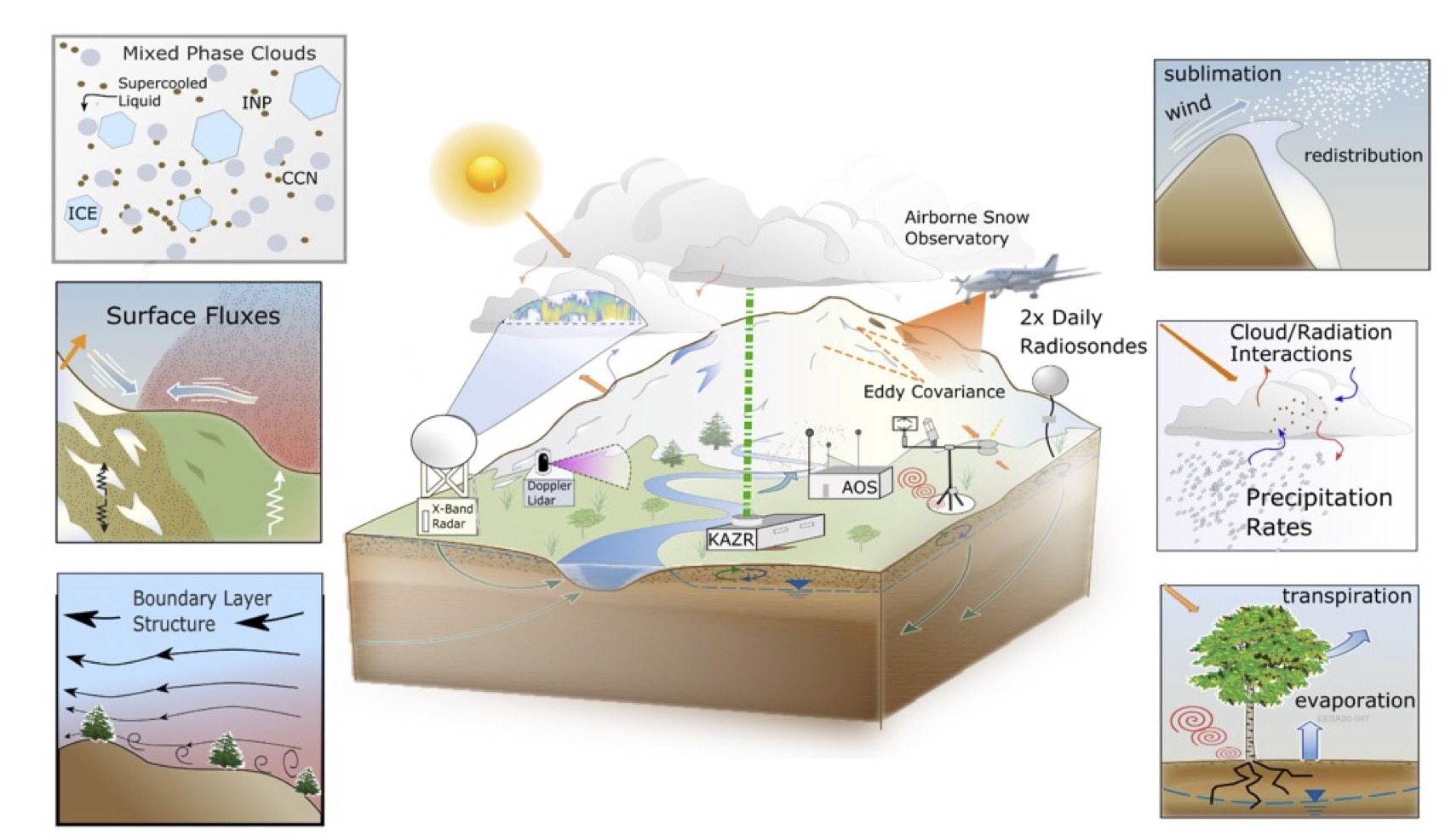Summary of and Selected Highlights from the Surface Atmosphere Integrated Field Laboratory (SAIL) Field Campaign
Authors
Daniel Feldman — Lawrence Berkeley National Laboratory *
Allison C Aiken — Los Alamos National Laboratory
V. Chandrasekar — Colorado State University
Scott Matthew Collis — Argonne National Laboratory
Jessie Creamean — Colorado State University
Gijs de Boer — Brookhaven National Laboratory
Jeff Deems — National Snow Ice Data Center
Paul J. DeMott — Colorado State University
Jiwen Fan — Pacific Northwest National Laboratory
Alejandro Nicolas Flores — Boise State University
Maxwell Grover — Argonne National Laboratory
Thomas C Hill — Colorado State University
Anna Lily Hodshire — QuantAQ, Inc.
Erik Jason Hulm — Rocky Mountain Biological Laboratory
Carson Hume — Colorado State University
Robert Jackson — Argonne National Laboratory
Francesc Junyent — Colorado State University
Aaron D Kennedy — University of North Dakota
Matthew Kumjian — Pennsylvania State University
Ezra JT Levin — Handix Scientific (United States)
Jessica Lundquist — University of Washington
Joe Robert OBrien — Argonne National Laboratory
Alan Rhoades — Lawrence Berkeley National Laboratory
William Rudisill — Lawrence Berkeley National Laboratory
Zachary Scot Sherman — Argonne National Laboratory
S. McKenzie Skiles — University of Utah
James N. Smith — University of California, Irvine
Ryan Sullivan — Argonne National Laboratory
Adam Theisen — Argonne National Laboratory
Matt Tuftedal — Argonne National Laboratory
Adam Varble — Pacific Northwest National Laboratory
Andrew Clare Koehler Wiedlea — Lawrence Berkeley National Laboratory
Stijn Wielandt — Lawrence Berkeley National Laboratory
Kenneth Hurst Williams — Lawrence Berkeley National Laboratory
Zexuan Xu — Lawrence Berkeley National Laboratory
Category
ARM field campaigns – Results from recent ARM field campaigns
Description

The U.S. Department of Energy’s Atmospheric Radiation Measurement (ARM) program deployed the Second ARM Mobile Facility as part of the Surface Atmosphere Integrated Field Laboratory (SAIL) Campaign from September 1, 2021 to June 15, 2023. The main goal of the deployment is to advance the predictive understanding of the atmospheric processes driving the mountain hydrology of the Upper Colorado River Basin (UCRB). SAIL is achieving this goal by collecting a broad suite of observations of the dominant processes that impact how the atmosphere, surface and sub-surface work in tandem to produce water resources for the 40 million people and thousands of ecosystems that rely on the UCRB.
SAIL, spread across three locations near Crested Butte, Colorado, collected well over 100 different datastreams that are currently available for download at ARM Data Discovery, and, broadly speaking, tracked two very active water years: SAIL started in a record-setting drought and ended largely drought-free. Measurements of precipitation, aerosols, radiation, winds, and atmospheric thermodynamics, showed the temporal and spatial evolution of the atmosphere as it busted the drought. The Campaign was also marked by extreme collaboration: SAIL began in close collaboration with the DOE-sponsored Watershed Function SFA, but blossomed into much more: ARM, as a National User Facility, hosted over one dozen guest instruments at SAIL, and the SAIL Campaign catalyzed over a half-dozen deployments of the Tethered Balloon System to characterize vertical profiles of aerosols, and two major federally (non-DOE) sponsored field campaigns. NOAA’s Study of Precipitation, the Lower Atmosphere and Surface for Hydrometeorology (SPLASH) and NSF’ Sublimation of Snow (SOW) Campaigns collected complementary measurements that together with SAIL create a density of observations that will enable a detailed understanding of the atmospheric and surface processes that impact mountain hydrometeorology and hydroclimate. Observational highlights of the SAIL Campaign are shown in this poster as well as a brief showcase of some of the mysteries that the scientific community will explore with SAIL data now that data collection is complete and the analysis phase of the Campaign begins in earnest.
Lead PI
Daniel Feldman — Lawrence Berkeley National Laboratory

